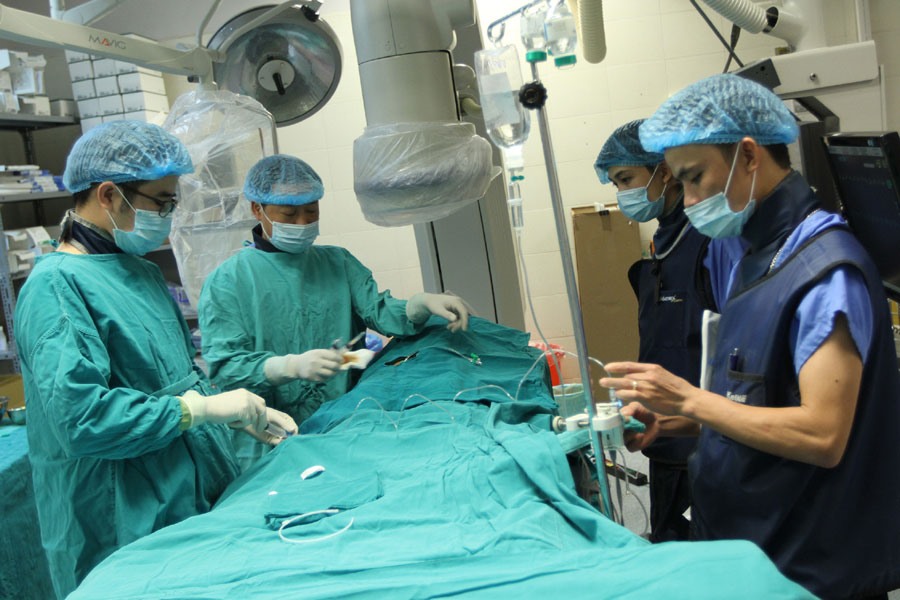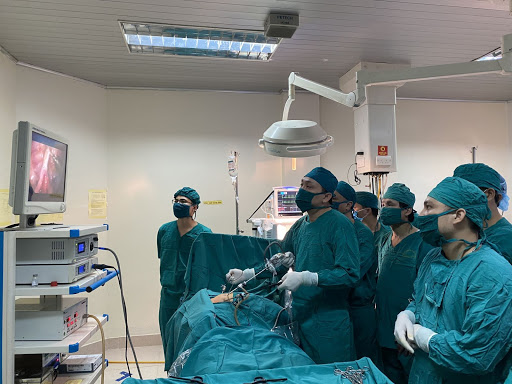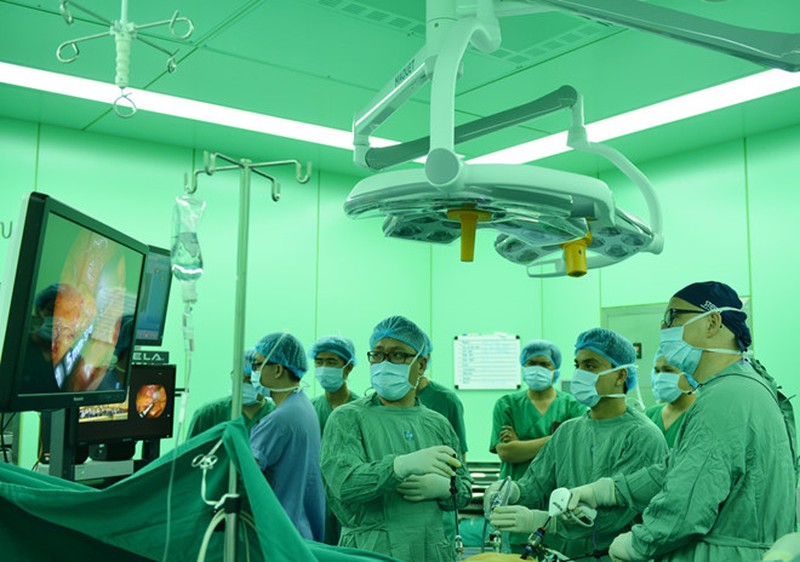Vietnam: Equipment, drugs, and consumables of the Anesthesia and Intensive Care department
On August 20, 2012, the Ministry of Health of Vietnam issued Circular No. 13/2012/TT-BYT guiding the work of anesthesia and intensive care.

Equipment, drugs, and consumables of the Anesthesia and Intensive Care department (Illustration)
According to Article 14 of Circular 13/2012/TT-BYT, the specific regulations for equipment, drugs, and consumable supplies in the Anesthesiology - Resuscitation Department are as follows:
* Surgical Unit:
- The surgical unit must have at least 02 (two) operating rooms.
- Each operating room must ensure the following equipment:
- Sufficient equipment, technical means, and drugs ensuring anesthesia - resuscitation according to the prescribed list suitable to the approved list of surgeries and procedures;
- A multi-position surgical table;
- A table for surgical and procedural instruments;
- Suitable surgical instrument kits;
- Oxygen system, compressed air, vacuum machine;
- An anesthesia machine with a vaporizer for inhalation anesthetics (preferably using a closed anesthesia system);
- A 5-parameter monitor (ECG, non-invasive blood pressure, SpO2, respiratory rate, temperature) or a monitor with multiple parameters including invasive blood pressure measurement, EtCO2, anesthetic gas analysis, and other advanced hemodynamic monitoring for critically ill or specialized surgery patients;
- At least 01 electric syringe pump with battery operation;
- Consumable supplies and respiratory and circulatory emergency equipment;
- Equipment for fluid warming and rapid fluid infusion;
- Patient warming equipment.
- Common equipment for the surgical area includes a defibrillator, difficult intubation kits, laryngeal masks of various sizes, and a flexible bronchoscope;
- Anesthesia - resuscitation areas (outside the surgical unit) must also have equipment, drugs, and consumables for sedation, anesthesia, local anesthesia, and respiratory and circulatory emergencies.
* Post-Anesthesia Care Unit (PACU):
- The PACU is arranged adjacent to the surgical unit, with a number of beds at least 1.5 times the number of surgical tables;
- Office equipment;
- Medical equipment:
- Medical gases (oxygen, compressed air);
- Suction machines;
- ECG and blood pressure monitors;
- SpO2 monitors;
- Body temperature monitors;
- Patient warming devices;
- Blood and fluid warming equipment;
- Ventilators and airway emergency equipment;
- Defibrillators;
- Equipment for pain management;
- Necessary drugs and consumables.
* Surgical Intensive Care Unit (SICU):
- Adequate adjustable beds with x-ray compatible mattresses for bedside x-ray imaging;
- Each bed should have a multi-parameter monitor, ventilator, infusion pump, and electric syringe pump, medical gas outlets (2 oxygen outlets, 1 compressed air outlet, 2 vacuum outlets). It is recommended that each room has only 1 bed with an appropriate design;
- Isolation rooms for backups and infectious isolation if needed;
- Ready stock of drugs and consumables as per regulations;
- Bedside procedure equipment: defibrillator, ECG machine, bedside x-ray machine, monitor, and ventilator;
- Patient warming devices;
- Blood and fluid warming devices;
- Pain management equipment;
- Ultrasound machines and rapid bedside test equipment;
- For SICUs in class I and special hospitals, additional equipment includes patient weighing devices, extracorporeal renal filters, cardiac output measurement devices, bedside transesophageal echocardiography, and a central monitoring system;
- Instrument washing and sterilizing area;
- Equipment storage area;
- Drug and medical consumables storage area;
- Patient meal preparation area;
- Reception area for visitors;
- Staff working rooms, on-call rooms, dining area, locker rooms, restrooms.
* Pain Management Unit: Depending on the conditions and pain treatment methods, the medical facility must have basic equipment such as:
- Drugs, equipment, and materials for pain management and complication handling;
- Pain assessment tools;
- Communication tools for patients to contact healthcare staff.
* Pre-Anesthesia Assessment Unit:
- Facilities meeting common consultation room standards;
- Necessary medical equipment, drugs, and consumables for anesthesia, resuscitation specialty consultations.
* Administrative Unit:
- Arranging briefing rooms, patient reception areas, staff rooms, and on-call rooms;
- Necessary office equipment.
More details ca be found in Circular 13/2012/TT-BYT, effective from October 10, 2012.
Le Vy
- Key word:
- Circular 13/2012/TT-BYT
- Number of deputy directors of departments in Vietnam in accordance with Decree 45/2025/ND-CP
- Cases ineligible for pardon in Vietnam in 2025
- Decree 50/2025 amending Decree 151/2017 on the management of public assets in Vietnam
- Circular 07/2025 amending Circular 02/2022 on the Law on Environmental Protection in Vietnam
- Adjustment to the organizational structure of the Ministry of Health of Vietnam: Certain agencies are no longer listed in the organizational structure
- Vietnam aims to welcome 22-23 million international tourists in Vietnam in 2025
-

- Vietnam: Anesthesiologists - intensivists must ...
- 16:55, 30/08/2012
-

- Vietnam: The external departments are responsible ...
- 16:50, 30/08/2012
-

- Notable new policies of Vietnam effective as of ...
- 16:26, 11/04/2025
-
.Medium.png)
- Notable documents of Vietnam in the previous week ...
- 16:21, 11/04/2025
-
.Medium.png)
- Notable documents of Vietnam in the previous week ...
- 16:11, 02/04/2025
-
.Medium.png)
- Notable new policies of Vietnam to be effective ...
- 16:04, 02/04/2025
-
.Medium.png)
- Notable new policies of Vietnam effective from ...
- 14:51, 21/03/2025
 Article table of contents
Article table of contents
